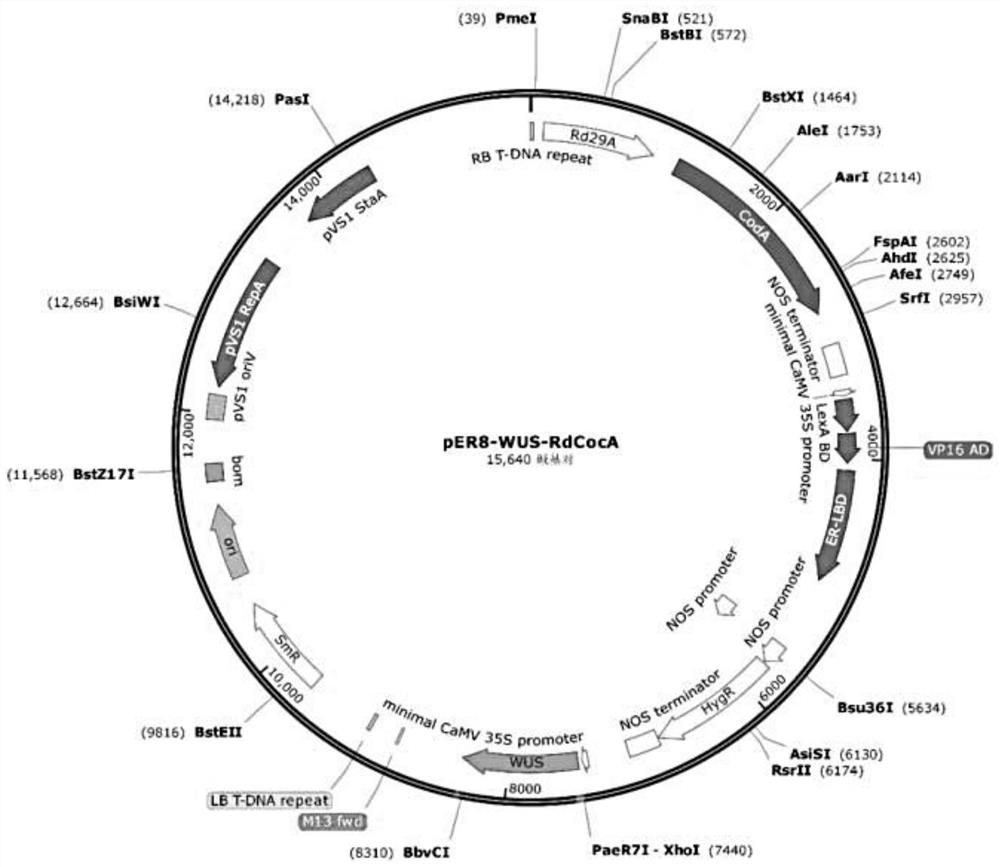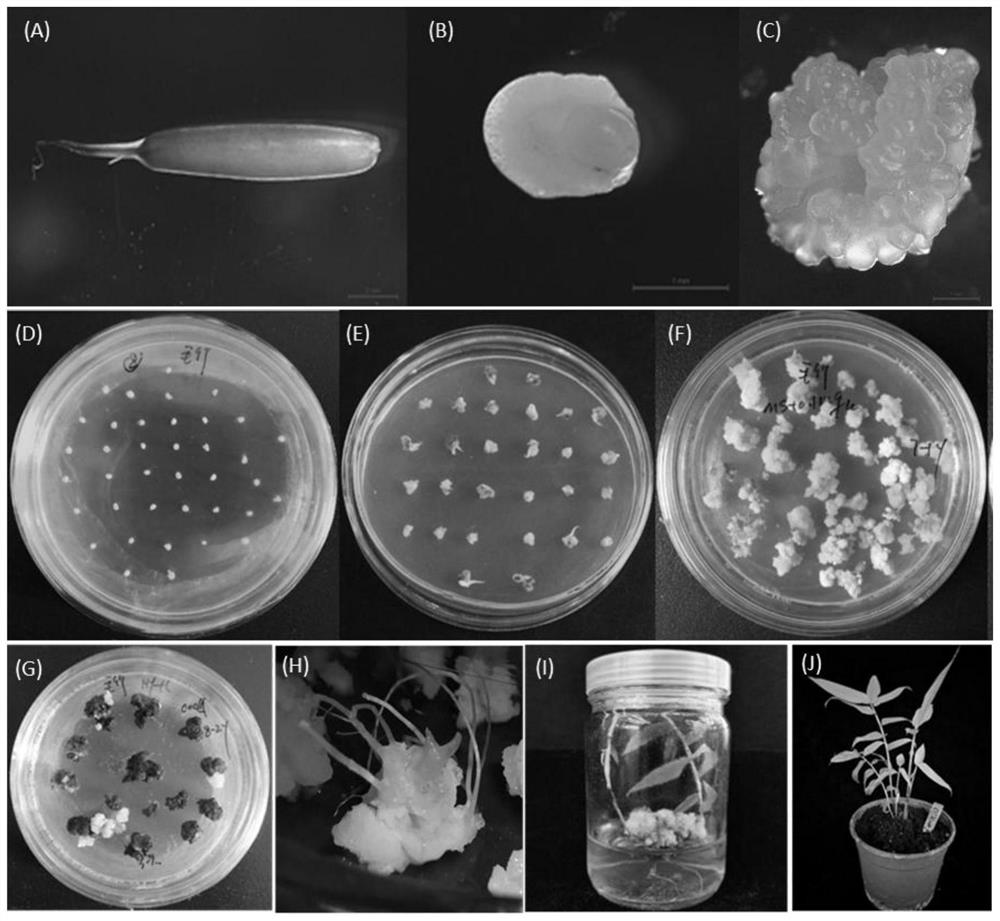A method for in vitro regeneration and genetic transformation of moso bamboo immature embryos
A technology of in vitro regeneration and genetic transformation, applied in the field of in vitro regeneration and genetic transformation of moso bamboo embryos, can solve the problems of imperfect regeneration system of moso bamboo, achieve the effects of shortening the transformation cycle, improving transformation efficiency, and improving proliferation and state
- Summary
- Abstract
- Description
- Claims
- Application Information
AI Technical Summary
Problems solved by technology
Method used
Image
Examples
Embodiment 1
[0034] A method for in vitro regeneration and genetic transformation of moso bamboo embryos, the method comprising:
[0035] (1) Induction of callus from immature embryos of Phyllostachys pubescens:
[0036] Surface sterilize the immature moso bamboo seeds with 75% alcohol for 60 seconds, wash them twice with sterile water, soak them in 0.1% mercuric chloride solution for 20 minutes, wash them with sterile water for 5 times, then peel off the embryos on the callus induction medium , 25 ℃, dark culture 21d, to obtain callus.
[0037] The induction medium used is: MS+2.0-6.0mg / L2,4-D+30g / L sucrose+7g / L agar, pH=5.8.
[0038] (2) Proliferation of Phyllostachys pubescens callus:
[0039] The induced callus was transferred to the subculture medium for proliferation, cultured in the dark at 25° C., and subcultured every 21 d (days) to meet the subsequent genetic transformation requirements.
[0040] The adopted subculture medium is: MS+0.1-1.0 mg / L 2,4-D (2,4-dichlorophenoxyaceti...
PUM
 Login to View More
Login to View More Abstract
Description
Claims
Application Information
 Login to View More
Login to View More - R&D
- Intellectual Property
- Life Sciences
- Materials
- Tech Scout
- Unparalleled Data Quality
- Higher Quality Content
- 60% Fewer Hallucinations
Browse by: Latest US Patents, China's latest patents, Technical Efficacy Thesaurus, Application Domain, Technology Topic, Popular Technical Reports.
© 2025 PatSnap. All rights reserved.Legal|Privacy policy|Modern Slavery Act Transparency Statement|Sitemap|About US| Contact US: help@patsnap.com


